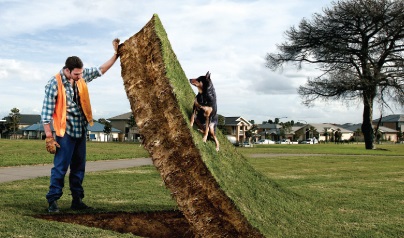
other stakeholders.
The following is a sample of commonly used terms and their definitions as provided in more detail in the Work Near Underground Assets: Guide 2007 (WorkCover NSW):
| access authority | A written authorisation, issued by an asset owner, which allows persons to work within a specified proximity of the asset. |
| accredited person | A person who has successfully completed a recognised training course relating to the specific job, the training having been conducted by a registered or accredited training organisation. (The Online Pipe & Cable Locating team are trained and accredited.) |
| asset owner | The owner, controller or operator of an underground asset (an underground asset includes electrical, water, sewage and drainage, gas, telecommunications, petrochemicals and hazardous substances). |
| cable | An insulated conductor or two or more such conductors laid together, whether with or without fillings, reinforcements or protective coverings. |
| competent person | A person who has acquired through training, qualification or experience, or a combination of them, the knowledge and skills to carry out the task. (The Online Pipe & Cable Locating team receive induction and ongoing training and attend regular toolbox talks to ensure competencies are achieved and maintained.) |
| confined space |
Confined space as defined in Australian Standard AS 2865 Safe Working in a Confined Space. (The Online Pipe & Cable Locating team are trained and accredited to work in confined spaces.) |
| construction work | Means any of the following: (a) Excavation, including the excavation or filling of trenches, ditches, shafts, wells, tunnels and pier holes. (b) Building, construction (including the manufacturing of prefabricated elements of a building at the place of work concerned), alteration, renovation, repair, maintenance and demolition of all types of buildings. (c) Civil engineering and works related tot he provision of services such as communications, drainage, sewerage, water and energy supplies. |
| emergency work | Work to rectify or prevent: imminent danger to human life or physical injury; imminent or continuing damage to, or destruction of, property or the environment; or an unscheduled outage which has or is likely to have a significant impact on the Distribution Network or the Carrier’s network. |
| excavating | The movement or placement of soil or other surface materials by removing, boring or forcing objects into the ground or surface o the earth. (Online Pipe & Cable Locating provide Non-destructive Digging services – also known as Hydro excavation or Pot holing – as a safe method of excavating underground assets.) |
| hazard | Anything (including work practices and procedures) that has the potential to harm the health and safety of a person. (Online Pipe & Cable Locating are trained to identify and manage potential hazards and work to Safe Work Method Statements.) |
| lancing | Using water or air aided by vacuum extraction to achieve non-destructive excavation. (Please see our Non-destructive Digging and Vacuum Loading pages for more information.) |
| mains | Part of the utility’s distribution system as opposed to “services” which are the take-offs for individual properties. |
| pot-holing | Excavating with hand tools to a pre-determined depth to establish if assets exist in the immediate location. (Please see our Non-destructive Digging page for more information.) |
| underground assets | Part of an underground network such as water/drainage/sewerage, electricity, gas, or communications etc. |
| underground services | The supply to individual houses or premises as opposed to underground assets which form part of the utility’s distribution system. |
NB. For a complete list of terms and definitions, please refer to the Work Near Underground Assets: Guide 2007 (WorkCover NSW)
» Potential customers making enquiries about our services.
» Potential customers making enquiries with utility companies.
» Staff of utility companies, construction and infrastructure companies, Councils and other government agencies, builders, plumbers, electricians, residential customers.
Should you have any questions or like further information, please call our friendly team on 1300 665 384.


